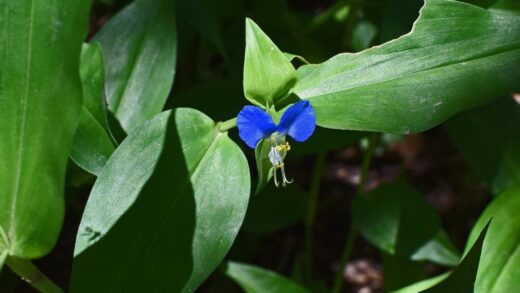As the vibrant colors of summer begin to fade and the crisp air of autumn signals the changing seasons, gardeners in colder climates face the important task of preparing their tender perennials for the winter. For lantana, which is native to tropical regions, survival through a freezing winter is not possible without intervention. Successfully overwintering this beloved plant allows you to preserve your favorite specimens, ensuring they return bigger and better the following spring. This process not only saves you the expense of buying new plants each year but also allows you to cultivate larger, more mature shrubs with a well-developed structure that would take a full season to achieve with a new plant.
There are two primary methods for overwintering lantana: bringing it indoors as a living houseplant or allowing it to go dormant in a cool, dark location. The method you choose will depend on the amount of space and light you have available, as well as the amount of effort you are willing to invest during the winter months. Treating it as a houseplant requires a very bright location and continued care, while inducing dormancy is a lower-maintenance option that simply involves storing the plant in a state of suspended animation until spring returns.
The preparation for overwintering should begin well before the first frost is expected. A sudden move from the outdoors to the indoors can shock the plant, so a gradual transition is always recommended. This is also the time to inspect the plant thoroughly for any pests, as you do not want to introduce insects like aphids or whiteflies into your home. A strategic pruning is also a key part of the preparation, making the plant more manageable in size and directing its energy toward survival rather than continued growth.
Regardless of the method chosen, the goal of overwintering is to keep the plant alive through the coldest months so it can be replanted in the garden once the danger of frost has passed. With a little planning and care, you can easily protect your lantana from the harshness of winter. This rewarding practice ensures the continuity of your garden and provides a head start on a spectacular display of color for the next growing season.
Preparing the plant for winter
The preparation process for bringing your lantana indoors should start several weeks before your region’s average first frost date. The first step is to carefully inspect the entire plant for any signs of pests. Check the undersides of leaves and the joints of stems for common culprits like aphids, whiteflies, and spider mites. It is much easier to treat for these pests while the plant is still outdoors rather than dealing with an infestation inside your home. If you find any pests, treat the plant thoroughly with insecticidal soap or neem oil, ensuring you get complete coverage.
Once the plant is pest-free, it needs a significant pruning. This is especially important if you have a large lantana that has been growing in the ground or in a large container all summer. Pruning reduces the overall size of the plant, making it much more manageable to handle and find space for indoors. You can cut the plant back by about two-thirds of its size, shaping it into a compact form. This hard prune will also reduce the number of leaves, which means the plant will require less water and light to survive the winter.
If your lantana has been planted in a garden bed, you will need to carefully dig it up and transplant it into a suitable pot. Choose a container that is large enough to accommodate the root ball comfortably but not excessively large. Use a high-quality, well-draining potting mix. After potting, water the plant thoroughly to help settle the soil around the roots and reduce transplant shock. This is a stressful process for the plant, so it is important to handle the root ball gently.
The final stage of preparation is the acclimation process. Do not move the plant directly from its sunny spot in the garden to the lower-light conditions of your home. Instead, begin by moving the potted plant to a shady spot outdoors for a few days. Then, gradually increase the amount of time it spends indoors over the course of a week or two. This hardening-off process in reverse helps the plant adjust to the significant changes in light, temperature, and humidity, minimizing leaf drop and shock.
Overwintering as an active houseplant
If you have a location in your home that receives a great deal of sunlight, such as a south-facing window or a heated sunroom, you can attempt to keep your lantana actively growing as a houseplant throughout the winter. This method requires providing the plant with as much direct sunlight as possible—at least six hours a day is ideal. Without sufficient light, the plant will become weak and leggy, and it will be unlikely to produce any flowers during its time indoors.
Watering will need to be adjusted significantly from the summer schedule. Indoor environments have lower light levels and the plant’s growth will naturally slow down, so it will use much less water. Allow the top inch or two of the soil to dry out completely before watering thoroughly. It is very easy to overwater an indoor lantana during the winter, which will quickly lead to root rot. Check the soil moisture every week, but only water when necessary.
Fertilization should be stopped completely during the winter months. Since the plant’s growth is slow, it does not require supplemental nutrients. Feeding the plant during this semi-dormant period can lead to a buildup of fertilizer salts in the soil, which can damage the roots. You can resume a regular feeding schedule in the spring when you see vigorous new growth beginning to appear and you are preparing to move the plant back outdoors.
Even with the best care, you should expect your lantana to drop some of its leaves after being brought inside; this is a normal reaction to the change in environment. You may also need to contend with lower humidity levels in a heated home, which can sometimes encourage pests like spider mites. Periodically check the plant for any issues and be prepared to provide a bit of maintenance to keep it healthy until it can return to the garden in the spring.
Forcing dormancy for winter storage
Forcing dormancy is often an easier and more reliable method for overwintering lantana, especially for gardeners who lack a bright, sunny spot indoors. This technique involves storing the plant in a cool, dark, and frost-free location where it will enter a state of suspended animation. An unheated garage, a cool basement, or an insulated shed where temperatures stay consistently between 2°C and 10°C are all ideal locations. The key is to keep the plant cold enough to remain dormant but warm enough that its roots do not freeze.
After you have pruned the plant back hard and potted it up, and before moving it into its storage location, you should gradually reduce its watering. This helps to signal the plant that it is time to enter dormancy. Once you move it into its cool, dark storage area, its water needs will become minimal. The goal is simply to keep the roots from completely desiccating. You will likely only need to provide a very small amount of water once every month or six weeks. The soil should be kept just barely moist—almost on the dry side.
During its dormant period, the lantana will likely lose all of its remaining leaves, and the stems may look woody and lifeless. This is completely normal and is not a sign that the plant has died. As long as the stems remain firm and are not mushy or brittle, the plant is still alive and simply resting. You do not need to provide any light or fertilizer during this time. The plant’s metabolic processes have slowed to a crawl, and it is simply waiting for the signals of spring to resume growth.
Resist the temptation to “rescue” the plant by bringing it into a warm room or giving it more water if it looks dormant. This can confuse the plant and cause it to break dormancy prematurely, producing weak, pale growth that is not sustainable. The best course of action is to leave it in its cool, dark spot and trust the process. This low-maintenance method requires very little effort throughout the winter months.
Waking the plant up in spring
The process of reawakening your overwintered lantana should begin about six to eight weeks before your last anticipated frost date. If you stored your plant in a dormant state, the first step is to bring it out of its cool, dark location and move it into a warmer area with bright, indirect light. This change in temperature and the introduction of light will signal the plant that it is time to break dormancy and begin a new growth cycle.
At this time, you can perform a bit of spring cleaning on the plant. Inspect the stems and prune away any parts that are clearly dead, brittle, or mushy. You can check for life in a stem by gently scratching the bark with your fingernail; if you see green tissue underneath, that part of the stem is still alive. After this initial tidying up, give the plant a thorough watering to rehydrate the soil and the roots. This is often all it takes to trigger the emergence of new buds along the stems.
Once you see new growth beginning to appear, you can move the plant to a sunnier location to encourage strong, compact growth. This is also the time to resume a regular watering schedule, allowing the soil to dry slightly between waterings. You can begin fertilizing with a half-strength, balanced liquid fertilizer to provide the nutrients needed to fuel the new flush of growth. As the new leaves and stems develop, you can pinch back the tips to encourage bushiness.
Just as you acclimated the plant to indoor conditions in the fall, you must now acclimate it back to the outdoors in the spring. This process, known as hardening off, is crucial to prevent the tender new growth from being scorched by the sun or damaged by the wind. Start by placing the plant outside in a shady, protected spot for just an hour or two a day. Gradually increase the duration and the amount of direct sun exposure over a period of one to two weeks, until the plant is able to stay outdoors full-time. Do not plant it in the garden until all danger of frost has passed.
📷 Flickr / Szerző: Mauricio Mercadante / Licence: CC BY-NC-SA 2.0



















